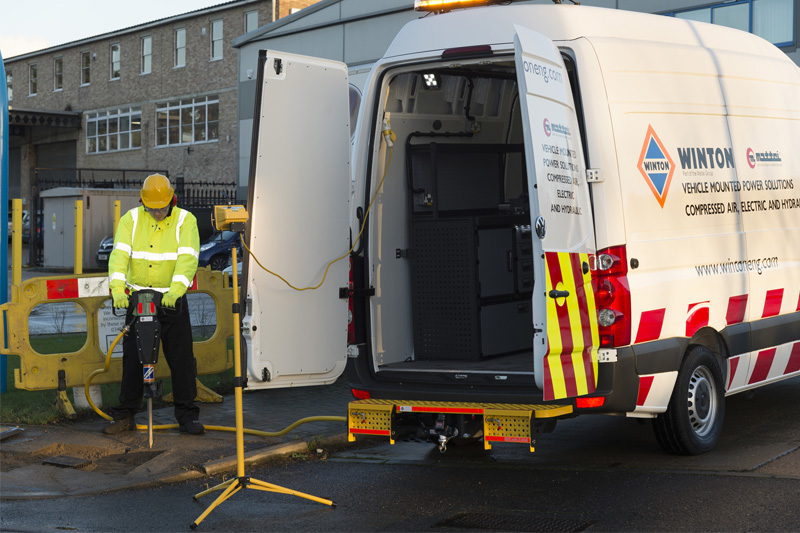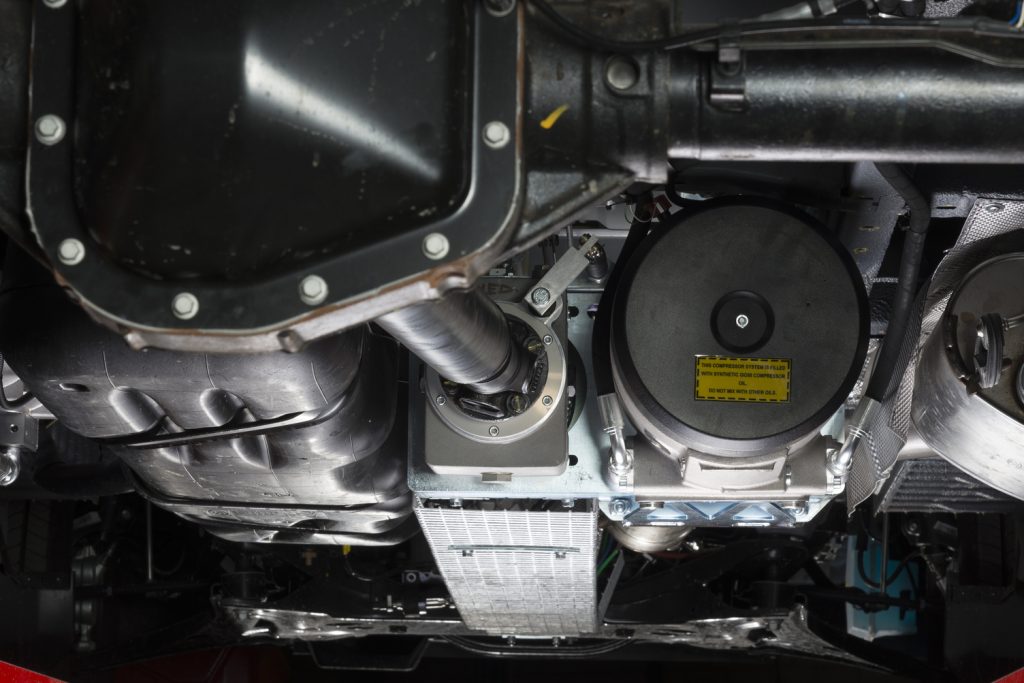
When a commercial fleet operator requires flexible power for their mobile workshops, on-vehicle systems can be an ideal solution. However, there are significant differences between older, traditional technologies and modern solutions. Paul Smith, Commercial Manager of on-vehicle power specialist Winton, explains what these are and why they matter.
Mobile power is required for many tasks carried out on the road, including the operation of road drills, hand tools, submersible pumps and electrofusion equipment, and for supplying site lighting. This has often meant towing a separate generator and/or compressor, carrying them in the back of a vehicle or arranging for these items to be delivered to site.
This approach doesn’t come without difficulties; equipment doesn’t always turn up on time, or might not even turn up at all. And if a separate compressor is used, the driver will need to ensure a fuel or power source is available on site. But there is an alternative: on-vehicle power. This involves a vehicle being professionally converted so that the power of the engine is used to drive auxiliary equipment. On-vehicle power systems can provide compressed air, electric, hydraulic or high pressure water jetting for commercial vehicles used by utility companies, emergency services and mobile tyre fitting operators.
However, traditional on-vehicle power solutions, such as those based on petrol- driven piston technology, can be heavy, noisy and almost always require a written scheme of examination by law.
Payload and weight
Since the introduction of Euro 6 there has been growing pressure for equipment installed within a vehicle to be as light as possible. The extra technology that is being fitted to meet the new emission regulations results in the base vehicle becoming heavier, potentially eating into payload capacity and increasing the risk of a vehicle being overweight.
In response, Winton has reduced the weight of its core driveline power take off (DLPTO) system by almost 70 kilograms in recent years, through practical innovations such as replacing steel with lighter materials including plastic and alloys. The structure of the drive gears has been reconfigured, and lightweight cabling has been introduced – all with the aim of lowering total weight, but without compromising the integrity of the system or undermining quality.
The company also offers a compact engine mounted system for both front (FWD) and rear wheel drive (RWD) vehicles, where the on-vehicle power system is installed within the engine compartment to reduce the overall system weight considerably therefore maximises the vehicle payload.
All these solutions are unique in that they use lightweight Mattei rotary vane compressors in the design, and this delivers many benefits, including the crucial reduction of fuel consumption and weight compared to other systems.

Safer, cleaner conditions
Although traditional on-vehicle power solutions can remove the need for towing or carrying equipment in the back of a vehicle, they can be noisy. Considering that employees operating from mobile workshops spend most of their workday in and around their vehicles, quieter systems can provide safer and more comfortable working conditions.
Winton’s on-vehicle power systems operate at only 72dB(A), which is well below the level at which employers must provide hearing protection and hearing protection zones. Lighter systems also lower exhaust emissions to benefit both employees and the environment.
Less admin
The Pressure Systems Safety Regulations 2000 stipulates that ‘users and owners of pressure systems are required to demonstrate that they know the safe operating limits (principally pressure and temperature) of their systems, and that they are safe under those conditions.’ To demonstrate this, a pressure system which could cause injury due to accidental release of stored energy and pressure, should be checked in accordance with a written scheme of examination if it equals or exceeds 250 bar litres. This document also needs to be put in place before the system is operated.
This needs to be done for most traditional on-vehicle power, as the ‘bar litres’ of their compressor systems (the maximum pressure in bar multiplied by the internal capacity in litres of the air receiver) tend to be equal to or exceed 250 bar litres. However, Winton’s systems have been designed to operate below this threshold, thereby removing this extra admin and cost of needing a written scheme of examination, leaving vehicle owners to concentrate on running their business and serving customers.
Winton’s on-vehicle power systems can include a compressor, generator, inverter and/or hydraulic power, alongside a range of ancillary equipment, including racking and workbenches, external light bars and work lights. They can be fitted to a wide range of commercial vehicles, from light commercial vehicles to 26 tonne lorries.








